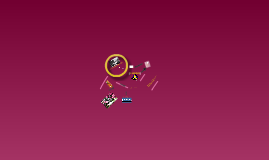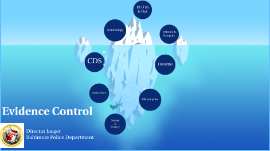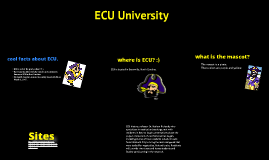ECU
Transcript: Evidence Control Baltimore Police Department ECU In & Out ECU In & Out The visible ECU In In Items are "received" at the Counter inside Headquarters (HQ) All case information is provided by the submitting/responsible member on a Form 56 and entered into "Ace/Winace" (evidence tracking software) Classification Items are stored based on their classification - there are four general types: General Property Money & Jewelry* Firearms* Controlled Dangerous Substances* *Sensitive Items Classification General Property General Property Once Accepted By ECU, general property is temporarily stored behind the receiving counter. It may be moved to another location within ECU HQ facility or to the offsite warehouse depending on the type of evidence/property, size, and expected need. Money & Jewelry Money & Jewelry are deposited into the "Money Mailbox" to be collected by Money Vault Personnel. Money & Jewelry Firearms Generally - Firearms and Firearms related evidence are deposited into the "Firearms Mailbox" to be collected by Firearms Vault personnel. Firearms Items that are too large to fit into the firearms mailbox are stored behind the receiving counter and moved to the firearms vault the next business day. Controlled Dangerous Substances (CDS) All CDS and some CDS related evidence is deposited into the "CDS" mailbox to be collected by Drug Analysis Unit Personnel. Controlled Dangerous Substances (CDS) Out Out Items are only released from ECU in the following instances: Requested for Court (Evidence) Requested for Continued Investigation Internal (e.g. BPD) External - (e.g. USAO, ATF, FBI, etc.) Disposal Court Order Returned To Customer (RTC) Destroyed Auction Converted to Departmental Use Court Court Items needed for court generally must be requested 48 hours in advance. This is due to the possibility of having to locate and recover property from multiple locations and/or sensitive areas. The requesting member must present a subpoeana and departmental ID to ECU personnel. Winace is updated to reflect that the member has removed the property from ECU. That member is now responsible for its custody until it is returned to ECU. Continued Investigation Continued Investigation Items may be requested by BPD members for an ongoing investigation. Investigations may be internal or external. Custody of items removed from ECU is transferred to the member (Winace) and the receiving member is responsibile for the items integrity and safekeeping until it is returned to ECU. Any opened items must be verified and a memo describing the circumstances must accompany the returned item. Disposal Disposal Disposal refers to the final disposition of Evidence/Property. Disposal is only authorized when: The Responsible Officer of record has authorized it, and The court records have been checked for any pending activity. CDS CDS Controlled Dangerous Substances (CDS - Drugs) In In Once items are received at the counter, the submitting officer places the sealed package into a secure, limited access, temporary storage container (mailbox). This mailbox is maintained by the Drug Analysis Unit. Authorized DAU personnel recover the CDS and remove it to the Lab. The location change is made in Winace. Drug Analysis Unit Drug Analysis Unit At the Lab, a determination is made whether or not the case will be analyzed. Once analyzed or if no analysis is to be completed, items are returned to ECU, directly to ECU drug vault personnel. Drug Vault Personnel receive the items noting the transfer and location change in Winace. CDS is then stored in the secured, limited access Drug Vault until it is needed or can be disposed of. Out Out CDS items are only released to: The responsible officer for court purposes; The drug analysis unit for additional/supplemental analysis or re-testing; An authorized outside agency for analysis, or continued investigation/prosecution; or to be disposed of. NO CDS IS EVER RETURNED What is CDS? What is CDS? Any substance (commonly illicit or prescription drugs) which has been scheduled by the Drug Enforcement Administration (DEA). These substances are scheduled (I – V) based on the accepted medical use, likelihood of diversion, and potential for abuse or addiction. DEA Classifications DEA Classifications Drugs, substances, and certain chemicals used to make drugs are classified into five (5) distinct categories or schedules depending upon the drug’s acceptable medical use and the drug’s abuse or dependency potential. The abuse rate is a determinate factor in the scheduling of the drug; for example, Schedule I drugs have a high potential for abuse and the potential to create severe psychological and/or physical dependence. As the drug schedule changes-- Schedule II, Schedule III, etc., so does the abuse potential-- Schedule V drugs represents the least potential for abuse. A Listing of drugs and their schedule are located at Controlled Substance Act (CSA) Scheduling or CSA Scheduling by Alphabetical Order. These lists describes the

















